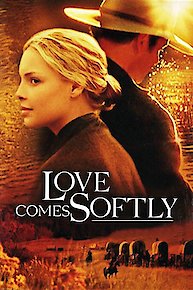
Bury Me Not On The Lone Prairie
Where to Watch Bury Me Not On The Lone Prairie

"Bury Me Not On The Lone Prairie", directed by Ray Taylor, is a classic hallmarker of the American Western Film genre that gracefully blends adventure, suspense, action, and a touch of humor, succinctly capturing the spirit and landscape of the Old West. Released in 1941, the movie features Johnny Mack Brown in the lead role, along with Fuzzy Knight and Nell O’Day, in a plot that unfolds under the vast, crisp blue skies of the western frontier.
Johnny Mack Brown, known for his clear-cut portrayal of rugged cowboys, stars as Joe Barton, a resolute and principled cowboy. Joe Barton enters the screen as a protector, a man of action, always ready to draw his gun for the cause of justice. His character in the film is emblematic of the archetypal cowboy figure from the old west – enigmatic, just, and fearless. Brown's compelling acting skills manage to breathe life into this character that appears to be as vast and deep as the landscapes he traverses.
The film also stars Fuzzy Knight, famously known for his comic roles in western movies, playing “Bones”, Joe's sidekick. Bones brings a touch of humor and lightness, providing relief against the movie's backdrop of rugged life and harsh justice. His friendship and loyalty towards Joe further enrich the storyline, adding depth to both their personas. Their banter, camaraderie, and Knight's comic timing serve as one of the film’s winning features.
Nell O'Day, another significant character in the movie, is an actress known for her spirited roles in films of the 1940s. In "Bury Me Not on the Lone Prairie", she plays Judy, a spirited, independent woman who, despite the patriarchal norms of the era, asserts her voice and presence in a fundamentally male-dominated space. O'Day's depiction of Judy is powerful and adds a layer of strength and resilience to the narrative.
"Bury Me Not On The Lone Prairie" revolves around the quest for justice in the lawless world of the Old West. It speaks of treachery, battle for power, and pursuit of truth in an intoxicating display of gunslinging, horseback chases, saloon brawls, and desert escapades. As the plot unveils, it reveals a web of deceit, greed, and lawlessness that Joe and his sidekick, Bones, navigate to establish order. They deal with cattle rustling, land grabbing, and even murder as they follow the standard western archetype of good versus evil.
Among other notable features, the cinematography serves as a character itself. The long-shot frames beautifully capture the expanse of the wild west, the mountains, the ranches, the open ranges, and the desert, setting the stage for the epic adventure narrative that follows suit. Additionally, the film's dramatic score, ridden with galloping rhythms and sweeping melodies, perfectly complements its rich cinematography.
All in all, the film encapsulates the essence of the old west, breathed into life by memorable performances by its lead actors. The traditional, yet complex and subtly evolving characters contribute to the overall authenticity of the story. The blend of suspense, action, humor, and a touch of romance, all set in the adventurous and dangerous world of the American Frontier, makes "Bury Me Not On The Lone Prairie" a must-watch for fans of the Western genre.
Whether you're a long-time admirer of Western films or a newcomer to the genre, "Bury Me Not On The Lone Prairie" has something for everyone. It is more than just a movie; it's a journey back in time that paints a vivid picture of the Old American West, spiked with the thrill of adventure, the quest for justice, and the enduring spirit of camaraderie. By blending thrilling storytelling, memorable characters, and captivating landscapes, "Bury Me Not On The Lone Prairie" is a stellar representative of its genre, which withstands the test of time.
Bury Me Not On The Lone Prairie is a Western movie released in 1941. It has a runtime of 61 Critics and viewers have rated it moderate reviews, with an IMDb score of 5.6..






































